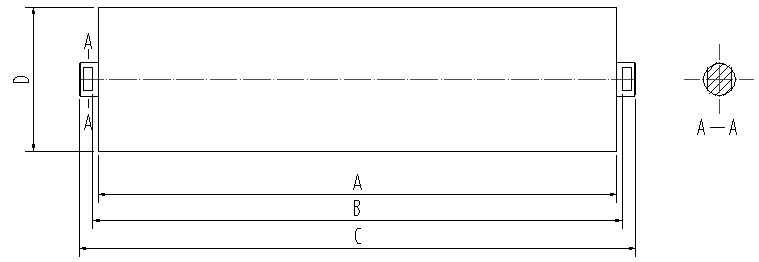 Afrikaans
Afrikaans  Albanian
Albanian  Amharic
Amharic  Arabic
Arabic  Armenian
Armenian  Azerbaijani
Azerbaijani  Basque
Basque  Belarusian
Belarusian  Bengali
Bengali  Bosnian
Bosnian  Bulgarian
Bulgarian  Catalan
Catalan  Cebuano
Cebuano  Corsican
Corsican  Croatian
Croatian  Czech
Czech  Danish
Danish  Dutch
Dutch  English
English  Esperanto
Esperanto  Estonian
Estonian  Finnish
Finnish  French
French  Frisian
Frisian  Galician
Galician  Georgian
Georgian  German
German  Greek
Greek  Gujarati
Gujarati  Haitian Creole
Haitian Creole  hausa
hausa  hawaiian
hawaiian  Hebrew
Hebrew  Hindi
Hindi  Miao
Miao  Hungarian
Hungarian  Icelandic
Icelandic  igbo
igbo  Indonesian
Indonesian  irish
irish  Italian
Italian  Japanese
Japanese  Javanese
Javanese  Kannada
Kannada  kazakh
kazakh  Khmer
Khmer  Rwandese
Rwandese  Korean
Korean  Kurdish
Kurdish  Kyrgyz
Kyrgyz  Lao
Lao  Latin
Latin  Latvian
Latvian  Lithuanian
Lithuanian  Luxembourgish
Luxembourgish  Macedonian
Macedonian  Malgashi
Malgashi  Malay
Malay  Malayalam
Malayalam  Maltese
Maltese  Maori
Maori  Marathi
Marathi  Mongolian
Mongolian  Myanmar
Myanmar  Nepali
Nepali  Norwegian
Norwegian  Norwegian
Norwegian  Occitan
Occitan  Pashto
Pashto  Persian
Persian  Polish
Polish  Portuguese
Portuguese  Punjabi
Punjabi  Romanian
Romanian  Russian
Russian  Samoan
Samoan  Scottish Gaelic
Scottish Gaelic  Serbian
Serbian  Sesotho
Sesotho  Shona
Shona  Sindhi
Sindhi  Sinhala
Sinhala  Slovak
Slovak  Slovenian
Slovenian  Somali
Somali  Spanish
Spanish  Sundanese
Sundanese  Swahili
Swahili  Swedish
Swedish  Tagalog
Tagalog  Tajik
Tajik  Tamil
Tamil  Tatar
Tatar  Telugu
Telugu  Thai
Thai  Turkish
Turkish  Turkmen
Turkmen  Ukrainian
Ukrainian  Urdu
Urdu  Uighur
Uighur  Uzbek
Uzbek  Vietnamese
Vietnamese  Welsh
Welsh  Bantu
Bantu  Yiddish
Yiddish  Yoruba
Yoruba  Zulu
Zulu Exploring the Benefits and Applications of Rubber Pulleys in Mechanical Systems
The Versatility of Rubber Pulleys An Essential Component in Modern Machinery
In the rapidly evolving world of technology and manufacturing, the efficiency and effectiveness of machinery play a pivotal role in optimizing production processes. Among the myriad of components that contribute to machinery's operational capabilities, rubber pulleys stand out for their versatility and reliability. These seemingly simple components serve crucial functions across various industries, helping to drive systems with enhanced performance and durability.
Understanding Rubber Pulleys
Rubber pulleys are circular components typically made from high-quality rubber compounds, which provide a balance of flexibility, resilience, and strength. These pulleys can be found in numerous applications such as conveyor systems, automotive engines, and industrial machinery. Their primary function is to redirect and transmit power from one part of a machine to another, aiding in the smooth operation of conveyor belts, belts drives, and other mechanical systems.
Advantages of Rubber Pulleys
One of the most significant advantages of rubber pulleys is their ability to reduce noise and vibration during operation. Unlike metal pulleys, which can generate considerable noise when in motion, rubber pulleys absorb shocks and dampen vibrations, creating a more pleasant working environment and reducing wear and tear on associated machinery. This quality makes rubber pulleys particularly valuable in industries where noise reduction is crucial, such as in food processing or in any workplace focusing on creating a conducive environment.
Another benefit is their lightweight nature. Rubber pulleys are significantly lighter than their metal counterparts, making them easier to handle during installation and maintenance. This lightweight characteristic also contributes to energy efficiency, as less energy is required to accelerate and decelerate lighter pulleys. Additionally, the flexibility of rubber allows for better grip on belts, reducing slippage and ensuring efficient power transmission.
Applications in Various Industries
rubber pulley

Rubber pulleys are employed across a wide range of industries, showcasing their adaptability and importance. In the automotive sector, rubber pulleys are commonly used in engine belt systems to drive essential functions like charging the battery, running the air conditioning, and powering the water pump. Their resistance to heat and wear makes them suitable for these demanding applications.
In manufacturing and logistics, rubber pulleys are integral to conveyor systems. These systems rely on the smooth operation of pulleys to transport materials efficiently. The non-slip surface of rubber pulleys ensures that items are moved without mishaps, enhancing overall productivity.
Additionally, rubber pulleys are prevalent in the textile industry, where they facilitate the operation of machines that produce fabrics and garments. The gentle yet firm grip of rubber pulleys on textile belts is vital to maintaining the integrity of delicate materials while ensuring that production flows seamlessly.
Maintenance and Longevity
While rubber pulleys are designed to withstand significant wear over time, proper maintenance is essential to prolong their lifespan. Regular inspections to check for signs of wear and tear, such as cracks or deformities, can help in identifying potential issues before they escalate. Moreover, ensuring that the pulleys are aligned correctly and operating within their specified load limits can prevent premature failure.
Conclusion
In conclusion, rubber pulleys are a vital yet often overlooked component of modern machinery that contributes significantly to efficiency, durability, and operational excellence. Their unique properties allow for effective power transmission while minimizing noise and vibration, making them indispensable across various industries. As technology continues to advance, the role of rubber pulleys will undoubtedly evolve, but their fundamental value in enhancing machine performance will remain. Whether in automotive systems, conveyor belts, or industrial machinery, rubber pulleys will continue to drive innovation and efficiency in the manufacturing landscape.
-
Revolutionizing Conveyor Reliability with Advanced Rubber Lagging PulleysNewsJul.22,2025
-
Powering Precision and Durability with Expert Manufacturers of Conveyor ComponentsNewsJul.22,2025
-
Optimizing Conveyor Systems with Advanced Conveyor AccessoriesNewsJul.22,2025
-
Maximize Conveyor Efficiency with Quality Conveyor Idler PulleysNewsJul.22,2025
-
Future-Proof Your Conveyor System with High-Performance Polyurethane RollerNewsJul.22,2025
-
Driving Efficiency Forward with Quality Idlers and RollersNewsJul.22,2025





























